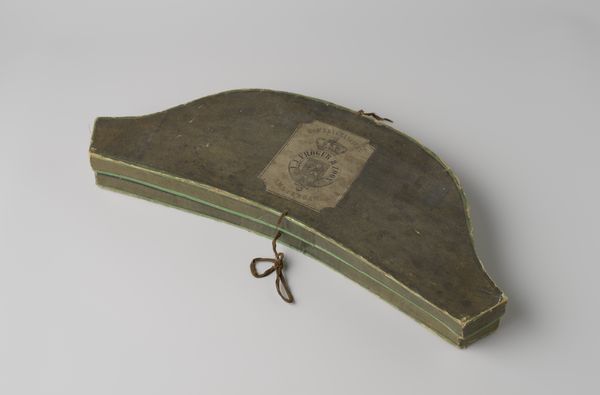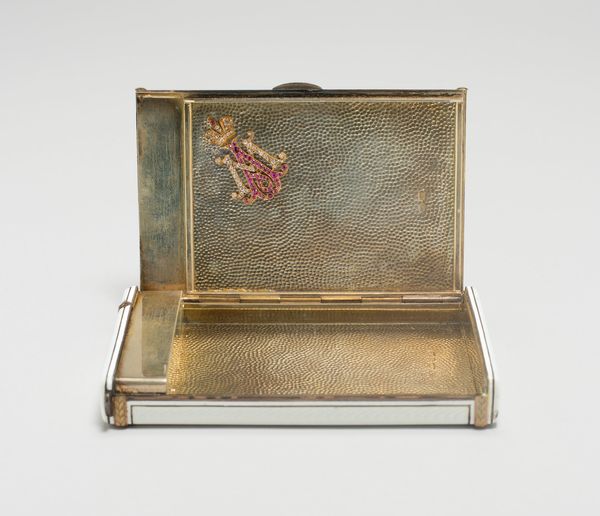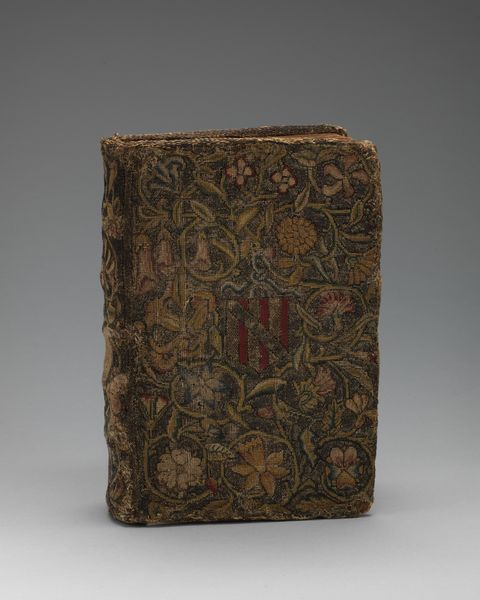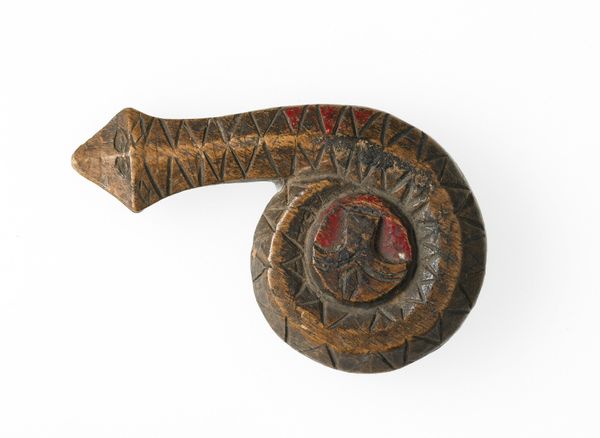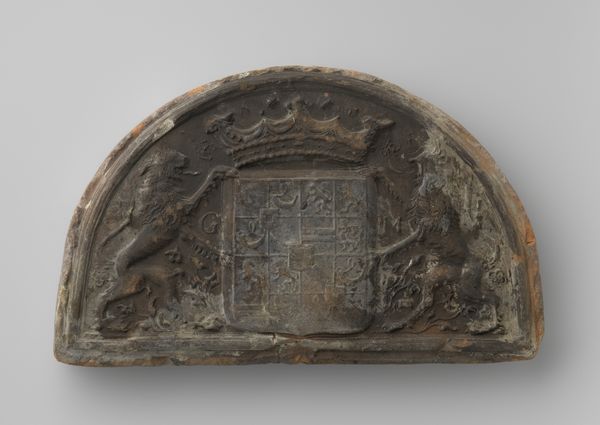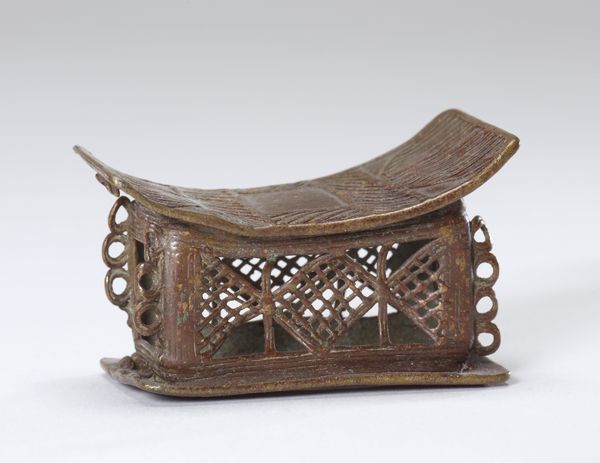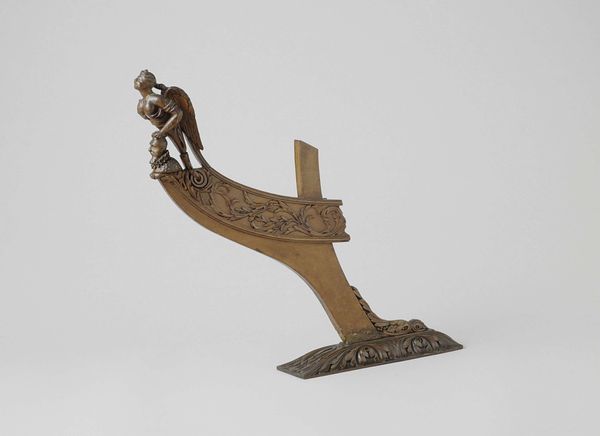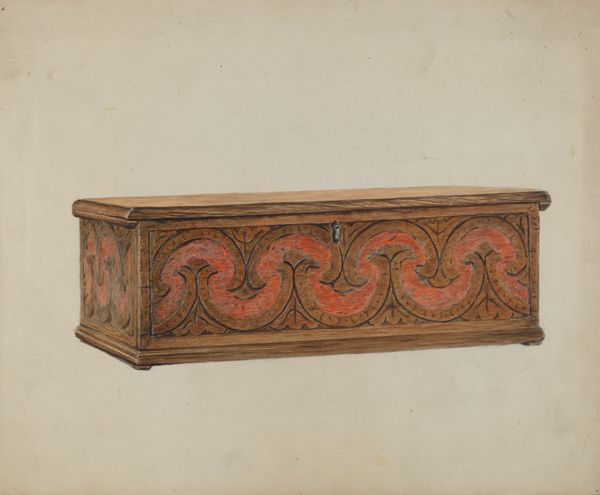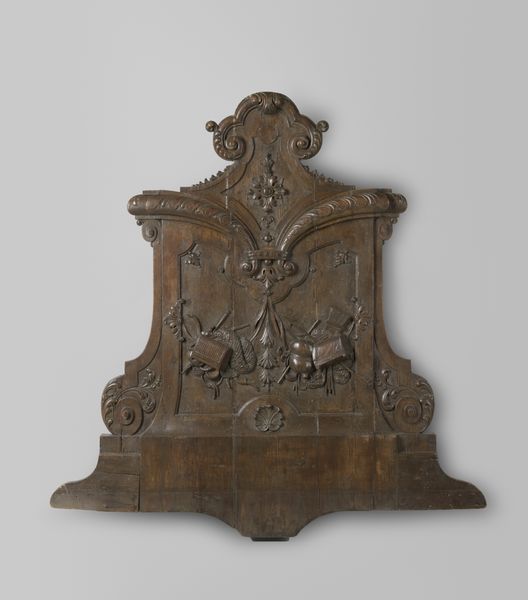
brass, silver, metal
#
african-art
#
brass
#
silver
#
metal
#
decorative-art
Dimensions: 6 1/8 × 6 3/4 × 2 1/4 in. (15.56 × 17.15 × 5.72 cm)
Copyright: Public Domain
Curator: What a curious object! It's… rectangular but with such unexpected curves. Reminds me a little of an elaborate pillow or perhaps a stylized quiver. Editor: Indeed. What we're observing here is an amulet container crafted by the Tuareg people, dating to the late 19th century. It resides in the Minneapolis Institute of Art’s collection. Predominantly constructed of metal, it skillfully incorporates silver and brass elements. Curator: The composition is quite compelling. The contrasting colors of the metals establish a hierarchy of sorts. The eye is drawn to those central geometric patterns and away from the more muted edges. There is almost something architectural about the layered construction. What significance might this have held in its original context? Editor: In Tuareg society, such amulet containers played a vital role, serving as protective devices. Within, they would carry sacred verses from the Quran, or medicinal herbs, intended to safeguard the wearer from harm, reflecting a fusion of Islamic belief and pre-Islamic spiritual practices. Curator: The inscription along the face intrigues me—I assume it is scriptural given the object's use? Editor: Precisely. This likely features religious passages thought to bestow blessings and ward off malevolent forces, emphasizing the profound connection between faith, material culture, and personal security for the Tuareg. Note how the materiality itself – silver, brass, the careful engraving – reinforces the amulet's efficacy. The quality speaks of reverence and intended potency. Curator: Seeing it framed here, divorced from its intended user and social context, does dilute its original purpose, however, as a museum artifact, the object invites us to reflect on material culture and its role in preserving spiritual beliefs, both individually and collectively. It acts almost as a time capsule bridging past and present, wouldn't you say? Editor: Indeed. By studying the craftsmanship, motifs, and materials used, we gain deeper insights into the cultural values and spiritual worldview that underpinned the Tuareg way of life, demonstrating how seemingly simple objects encapsulate profound beliefs and communal identities. Curator: Ultimately, a beautiful, potent testament to the layered intersection of form and faith, presented through a practical yet exquisitely detailed construction.
Comments
minneapolisinstituteofart almost 2 years ago
⋮
Tuareg men and women wear metal amulets containing Qur’anic verses and other protective messages suspended from cords around their necks. The large example is especially rare because of an inscription incised on the outside in Tifinar script, which is related to ancient Libyan scripts dating to 150 BCE. The inscription, whose letters are made up of lines, circles, and dots, reads from right to left and transcribes as NK SDLMQTR G XLYFA. It means, “I am Mr. Lmqtar Khalifa,” likely referring to a previous owner.
Join the conversation
Join millions of artists and users on Artera today and experience the ultimate creative platform.
